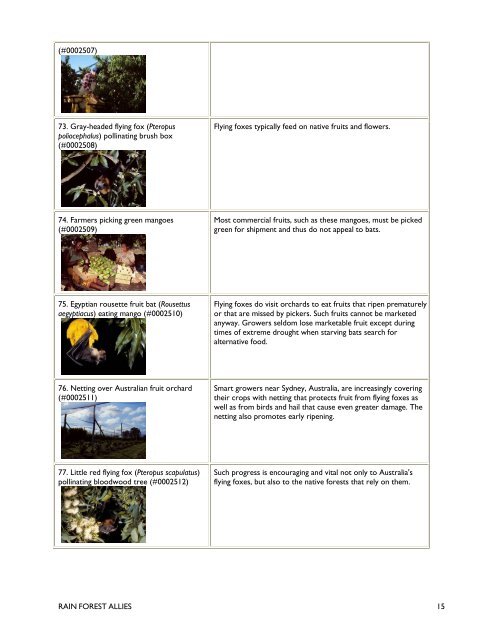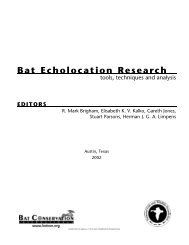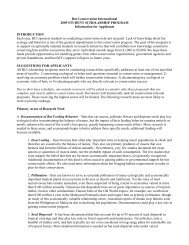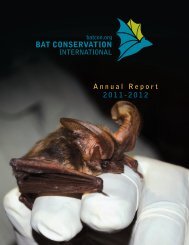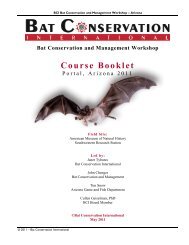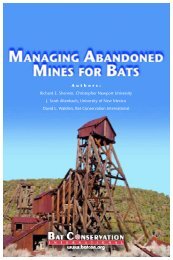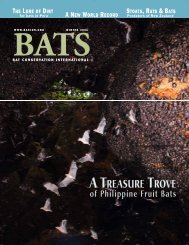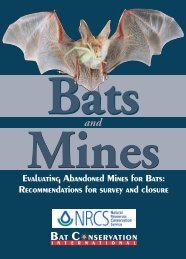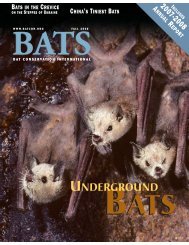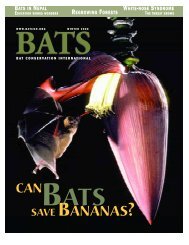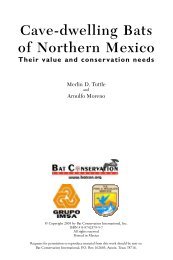AV Script: Bats: BATS OF LATIN AMERICA - Bat Conservation ...
AV Script: Bats: BATS OF LATIN AMERICA - Bat Conservation ...
AV Script: Bats: BATS OF LATIN AMERICA - Bat Conservation ...
You also want an ePaper? Increase the reach of your titles
YUMPU automatically turns print PDFs into web optimized ePapers that Google loves.
(#0002507)<br />
73. Gray-headed flying fox (Pteropus<br />
poliocephalus) pollinating brush box<br />
(#0002508)<br />
Flying foxes typically feed on native fruits and flowers.<br />
74. Farmers picking green mangoes<br />
(#0002509)<br />
Most commercial fruits, such as these mangoes, must be picked<br />
green for shipment and thus do not appeal to bats.<br />
75. Egyptian rousette fruit bat (Rousettus<br />
aegyptiacus) eating mango (#0002510)<br />
Flying foxes do visit orchards to eat fruits that ripen prematurely<br />
or that are missed by pickers. Such fruits cannot be marketed<br />
anyway. Growers seldom lose marketable fruit except during<br />
times of extreme drought when starving bats search for<br />
alternative food.<br />
76. Netting over Australian fruit orchard<br />
(#0002511)<br />
Smart growers near Sydney, Australia, are increasingly covering<br />
their crops with netting that protects fruit from flying foxes as<br />
well as from birds and hail that cause even greater damage. The<br />
netting also promotes early ripening.<br />
77. Little red flying fox (Pteropus scapulatus)<br />
pollinating bloodwood tree (#0002512)<br />
Such progress is encouraging and vital not only to Australia's<br />
flying foxes, but also to the native forests that rely on them.<br />
RAIN FOREST ALLIES 15


